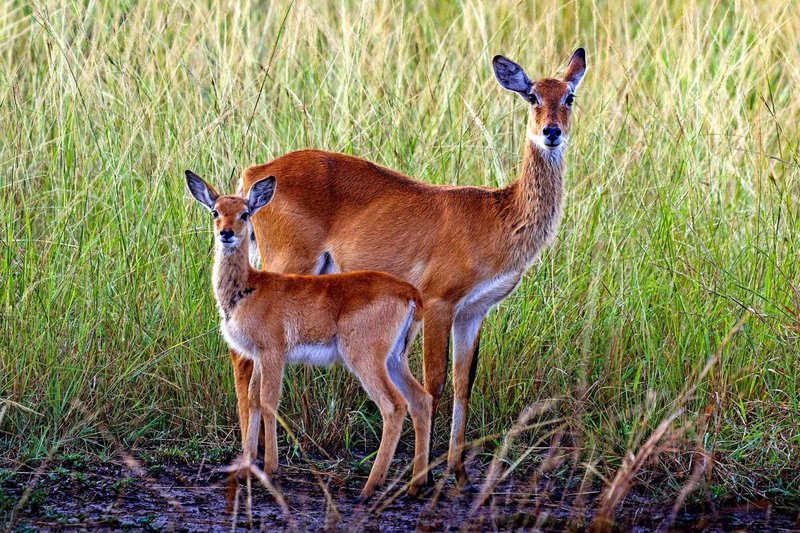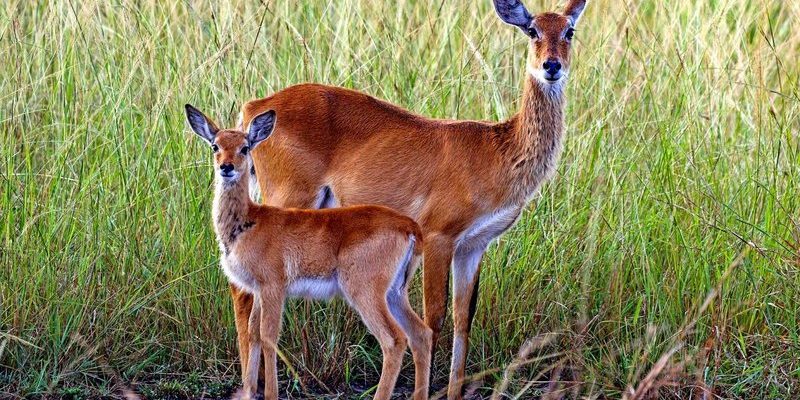
Imagine you’re in a bustling animal kingdom café, and someone asks, “What’s the difference between a Ugandan kob and those other gazelles I see on nature shows?” You’d want to have a good answer, right? Well, let’s dive in and explore ten animals that are similar to the Ugandan kob, armed with tips on how to spot the differences. We’ll think of this as a little safari through the animal kingdom, where you’ll leave as an expert in distinguishing our four-legged friends.
1. African Gazelle
The African gazelle is one of the closest relatives to the Ugandan kob. You might notice they share a similar body shape—long legs, slender build, and a graceful posture that makes them look like they’re ready to leap at any moment. The gazelle’s fur is typically lighter, often a sandy brown, with a slightly paler underbelly that helps them camouflage in the grasslands.
What sets them apart? Well, gazelles often have more distinct markings, like dark stripes on their flanks. Plus, their antlers are generally more curved and can have neat, spiral shapes, while the kob’s antlers are straighter and more pointed. Think of it as the difference between a classic pencil and a fancy fountain pen; both write well, but they have their own unique styles.
2. Thompson’s Gazelle
Thompson’s gazelles are like the energetic cousins of the Ugandan kob, often found in East Africa’s plains. These little guys are smaller and much sprightlier, making them appear almost like mini-kobs when they sprint. The key to spotting them is in their markings; they sport a distinctive black stripe that runs along their sides, which the kob lacks.
Another difference is in their body shape. While the Ugandan kob has a more robust build, Thompson’s gazelles tend to have a leaner, more delicate appearance. Imagine comparing a sturdy oak tree to a nimble willow; both are beautiful, but each has its own form that tells a story of its environment.
3. Defassa Waterbuck
Now, let’s move to the Defassa waterbuck. If you’ve ever seen a kob, you can picture the waterbuck with its longer hair and a more shaggy coat. This animal prefers habitats near water, which makes it easy to spot as it grazes near rivers and lakes. The waterbuck has a more robust and stockier frame compared to the kob.
What’s really interesting is the circular white ring on the waterbuck’s backside. This distinctive marking acts like a neon sign, helping both predators and spectators identify the species from a distance. So, if you’re keeping an eye out, just remember, while the kob may blend into the savanna, the waterbuck is more like a standout in a crowd.
4. Reedbuck
The reedbuck is another close relative of the Ugandan kob, hanging out in marshy areas and similar grasslands. These soft-coated antelopes have a slightly more rounded body shape and are known for their somewhat longer ears. If you’re trying to tell them apart, look for the reedbuck’s subtle reddish-brown coat, which can almost seem to shimmer when the sunlight hits it just right.
Additionally, reedbucks have a distinctive tuft of hair on their foreheads, giving them a bit of a “cool kid” vibe in the animal kingdom. So, when comparing it to the kob, think about a smooth jazz musician versus a pop star—both have their charm, but their styles are different!
5. Sitatunga
The sitatunga is a fascinating animal that’s adapted to live in wetlands, often seeking refuge in the water with its remarkable long, splayed hooves, which help it walk on muddy ground. While both the sitatunga and kob are antelopes, their habitats and behaviors differ significantly. The sitatunga’s coat is a rich dark brown with a lighter underbelly and is often more shaggy than that of the kob.
To differentiate between the two, consider their antlers. Male sitatunga have long, spiral horns that can reach impressive lengths—quite different from the more modest and straight horns of the Ugandan kob. In essence, the sitatunga is like the water-loving relatives who prefer to splash around, while the kob is more of a land explorer.
6. Impala
The impala is another antelope that shares similarities with the Ugandan kob, particularly in the way they both inhabit grasslands. However, the impala is often much more agile, famous for its incredible leaps. You might find them in large groups, just making the kob seem a bit more solitary by comparison.
Their coloration is also a giveaway; impalas have a more pronounced contrast between their dark back and lighter belly, making their silhouette stand out. When you see one bounding over the savanna, you can easily tell it apart from a kob, which tends to be a bit less flashy in its movements.
7. Greater Kudu
If we take a step up in size, we meet the greater kudu. These majestic antelopes have long, spiral horns and a more rugged appearance than the kob. Kudu have a striking gray-brown coat marked with white vertical stripes that lend them an air of elegance.
The key differences really come down to size and those impressive horns. While the kob is more petite in stature, the kudu can be much taller and heavier. Think of it as comparing a nimble sports car to a robust SUV; they each have their own strengths and characteristics that define them.
8. Nyala
The nyala is like the shy artist of the antelope world. With its beautiful striped coat and twisted horns, this animal is often found in thick brush and woodlands rather than open savannas. You can spot a nyala’s softer hues, which range from brown to gray, often with a lighter belly.
The difference in horns is significant too; male nyala have long, spiral horns that can be quite impressive. So, while both the kob and nyala belong to the same family, their habitats and physical traits provide easy clues to tell them apart. Picture them as two different types of artists—one prefers the quiet of the studio, and the other thrives in the bustling gallery.
9. Bongo
Last but not least, we have the bongo. This beautiful antelope is wrapped in a coat of rich chestnut and has bold white stripes running down its side. The bongo prefers dense forest habitats, making it less common in open areas compared to the kob.
Bongos are much larger than the kob, and their curved horns can be quite the sight. While the kob is all about graceful leaps across the plains, the bongo is more about stealthy movements through the thick underbrush. If you encounter one, it’s like spotting a rare jewel; both magnificent yet elusive.
10. Suni
Finally, let’s chat about the suni, one of the smallest antelopes out there. These little cuties are found in dense forested areas, where their small size helps them easily navigate thick undergrowth. Unlike the kob, which is more robust and medium-sized, the suni has a more petite and delicate build.
Their coloring is similar to that of a kob, but their shorter legs and smaller frame make them stand out. Think of it like comparing a cozy cottage to a sprawling mansion—both are lovely, but one is just a bit more compact and charming.
In conclusion, while the Ugandan kob is a stunning example of antelope beauty, there are plenty of other animals roaming the wild that share similar features but also stand out in their own right. Knowing the key differences not only enriches your wildlife knowledge but also enhances your appreciation for the diverse creatures that inhabit our planet. So next time you spot a kob leaping across the savanna, you’ll have a whole roster of comparisons to share over coffee!

